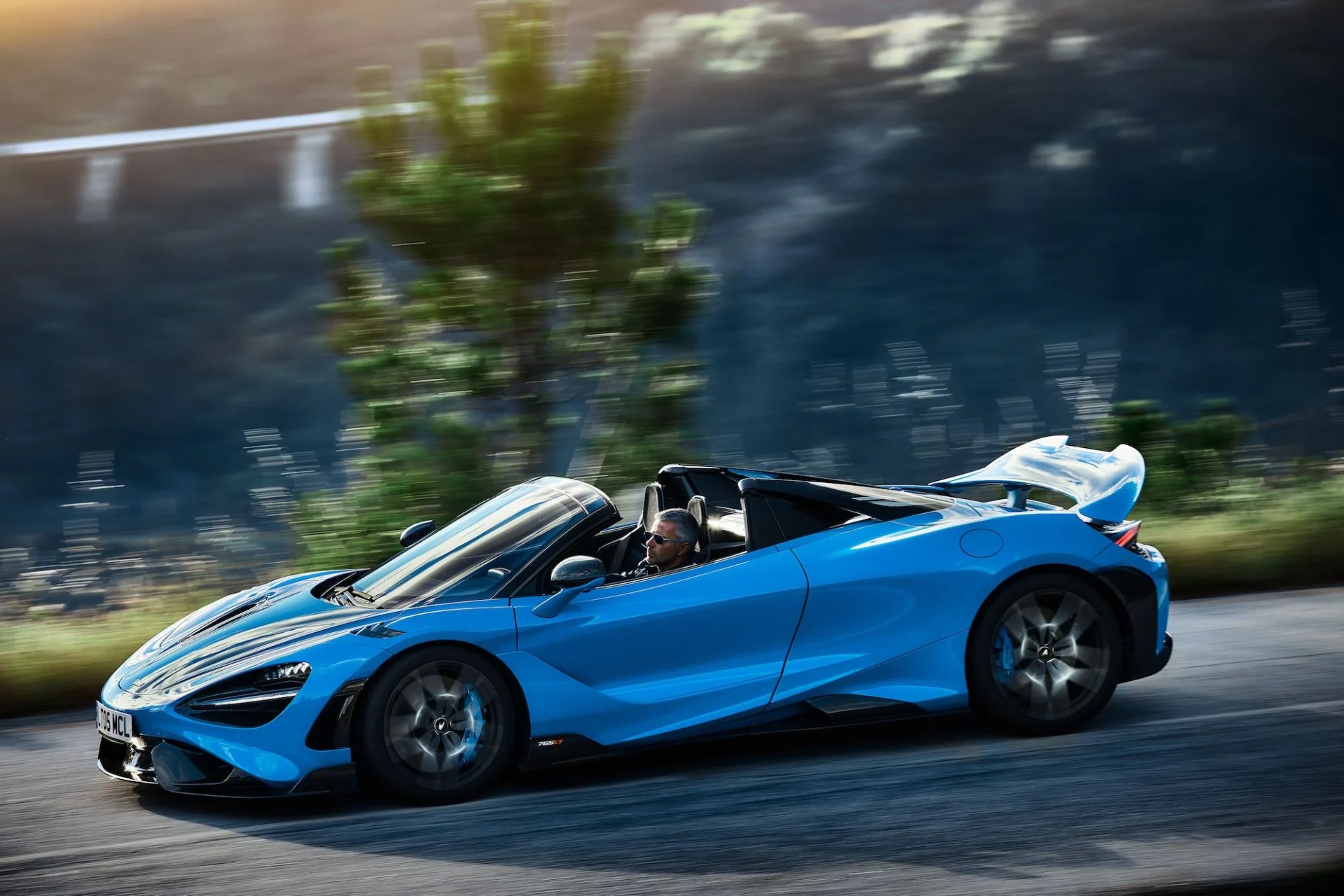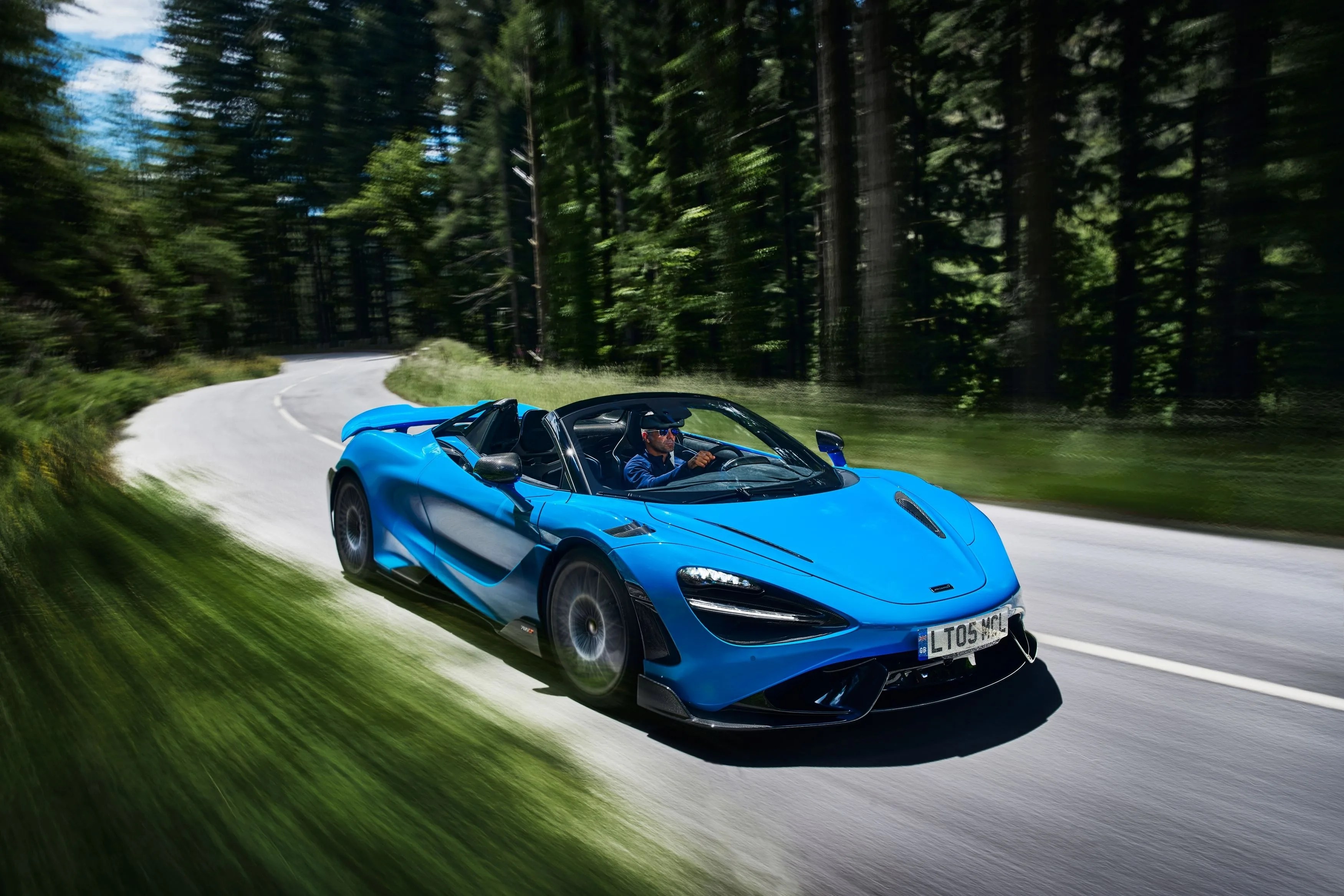Generally speaking, most cars designed to do their best work on race tracks have fixed roofs. Sure, you have purpose-built exceptions like Formula 1 race cars and IndyCar racers that forgo roofs and windshields altogether in the name of cutting as much weight as possible, but when it comes to cars that are either street-legal or based on street-legal cars, they generally have fixed tops. Permanent, immobile roofs offer two primary advantages: they’re lighter than convertibles (as most convertibles have to have both a more complex, moving roof and the added mechanical gear to make it go up and down), and they have
Which is to say, the idea of McLaren taking the super-track-capable 765LT and whipping up a Spider version with a retractable convertible top seems a tad counter-intuitive to the car’s declared mission of conquering road courses. Yet, even so…we’re a little bit in love with it. After all, most buyers probably won’t be spending much time on the track — and as we found with the 720S Spider (and many other fast convertibles), offering the ability to go topless means you can have more fun at semi-legal speeds.
The McLaren 765LT Spider doesn’t give up much to the coupe
 McLaren
McLaren108 pounds. That’s how much more the 765LT Spider weighs than the McLaren 765LT coupe. Plop even the lightest adult passenger in the right-hand seat of the hardtop, and you’ve likely added more weight than that.
In other words, the change in performance is all but unnoticeable in the real world. Or rather, all but unnoticeable, period: McLaren quotes a 0-60-mph dash of 2.7 seconds and a 0-124-mph time of 7.2 seconds for the Spider, same as the coupe. With the roof raised, so long as you can squeeze your helmeted head inside, it should be almost exactly as capable as the fixed-top version.




